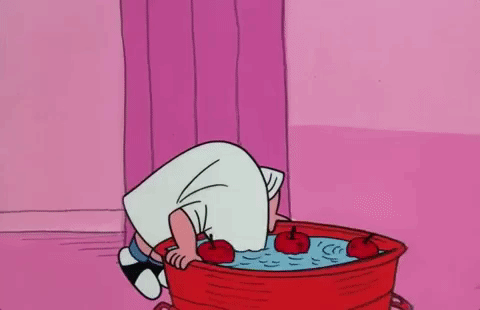Halloween at Hogwarts, Samhain in Scotland
October 31 at Hogwarts is a familiar – albeit more magical – tradition for Muggle readers who are accustomed to celebrating Halloween. There are pumpkins, ghosts, skeletons, sweets, and sometimes an added scary element – like an attack by a troll, Basilisk, or Sirius Black. Every day is Halloween at Hogwarts, but the occasion still merits a spooky celebration. However, although the festivities may seem quite recognizable to English and American readers, Hogwarts is in Scotland where the last night of October has a slightly different history of celebrations. The school should consider incorporating aspects of the Gaelic festival that inspired Halloween: Samhain.
Samhain, or Samhuinn, (pronounced SAH-wen) is an ancient pagan observance marking the end of the harvest season and beginning of winter. As the seasons shift, the veils that separate the worlds of the living and the dead are thinnest, allowing spirits to mingle with the living – and providing an opportunity for the Hogwarts ghosts to have the spotlight.
One ritual associated with Samhain is bonfires. In Edinburgh, there is an annual fire festival that features dancers performing the standoff between the Winter King and Summer King, presided over by the Goddess, or Divine Hag, Cailleach. Hogwarts could certainly put on quite a show with help from Dr. Filibuster’s Fireworks, Weasleys’ Wildfire Whiz-bangs, Hermione’s bluebell flames, and even Fire Crabs provided by Hagrid. Peeves would surely relish the chance to be the center of attention and play a role. As for jack-o’-lanterns, turnips are traditionally used instead of pumpkins in Scotland. A neep lantern can be made by carving out a turnip – someone tell Hagrid to repurpose his pumpkin patch.
Another Samhain tradition is guising, or children going door-to-door dressed as evil spirits, thus blending in with the spirits that might abound on that night. If they perform an impressive trick, song, poem, or joke, they might receive a treat in exchange. Hogwarts students could try to impress their professors with their mastery of certain spells and charms. Good luck getting any sweets from Snape.
There’s even an element of divination associated with Samhain to interest Professor Trelawney (and probably annoy Hermione). An engaged couple would each place a nut in a fire, and if they burned quietly, it meant a happy marriage. If they hissed and spat, the marriage would be tumultuous. On second thought, this one has the potential to cause quite a bit of drama among teenage couples.
For singletons hoping for eventual romance, Professor Sprout might be of help by planting some kale. The shape of a kale stalk pulled from the ground after dark on Samhain would reveal the height and figure of one’s future partner. Soil on the stalk was thought to be an indicator of wealth – so a dirty stalk might mean a full Gringotts vault. Another option is peeling an apple in one continuous strip and throwing the peel over one’s shoulder to reveal the first letter of the name of one’s future spouse in the shape of the discarded peel. Apples were associated with the Otherworld and also used on Halloween for “dooking” (more commonly known as bobbing).
With just a few adjustments, Hogwarts could easily embrace its Scottish roots and have an even more magical, mystical Halloween night. Which Samhain traditions would you want to see or participate in at Hogwarts?



